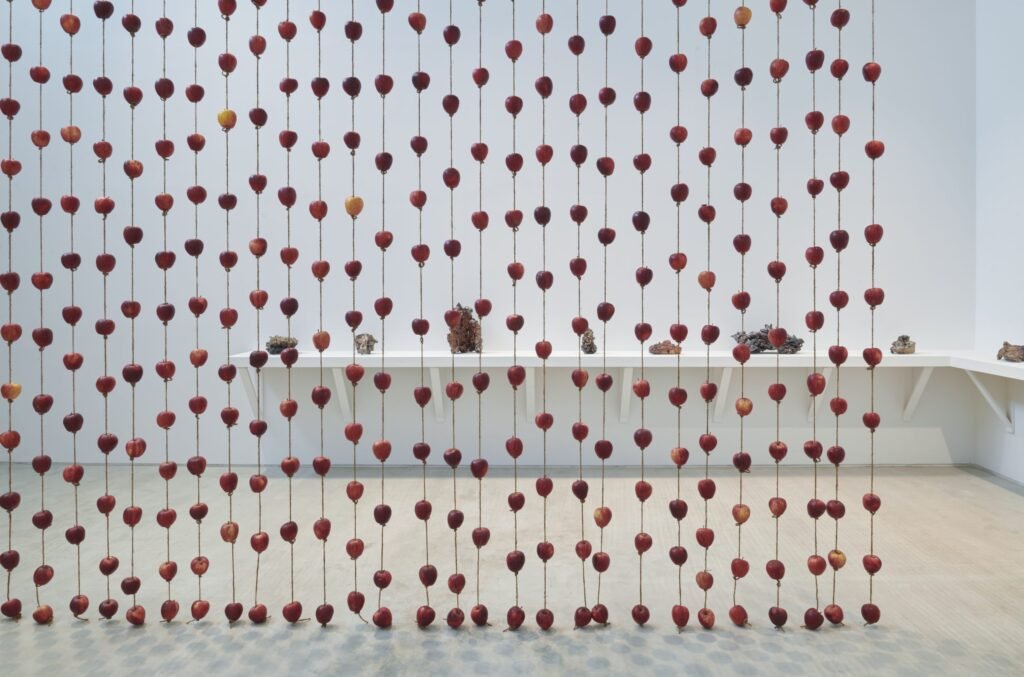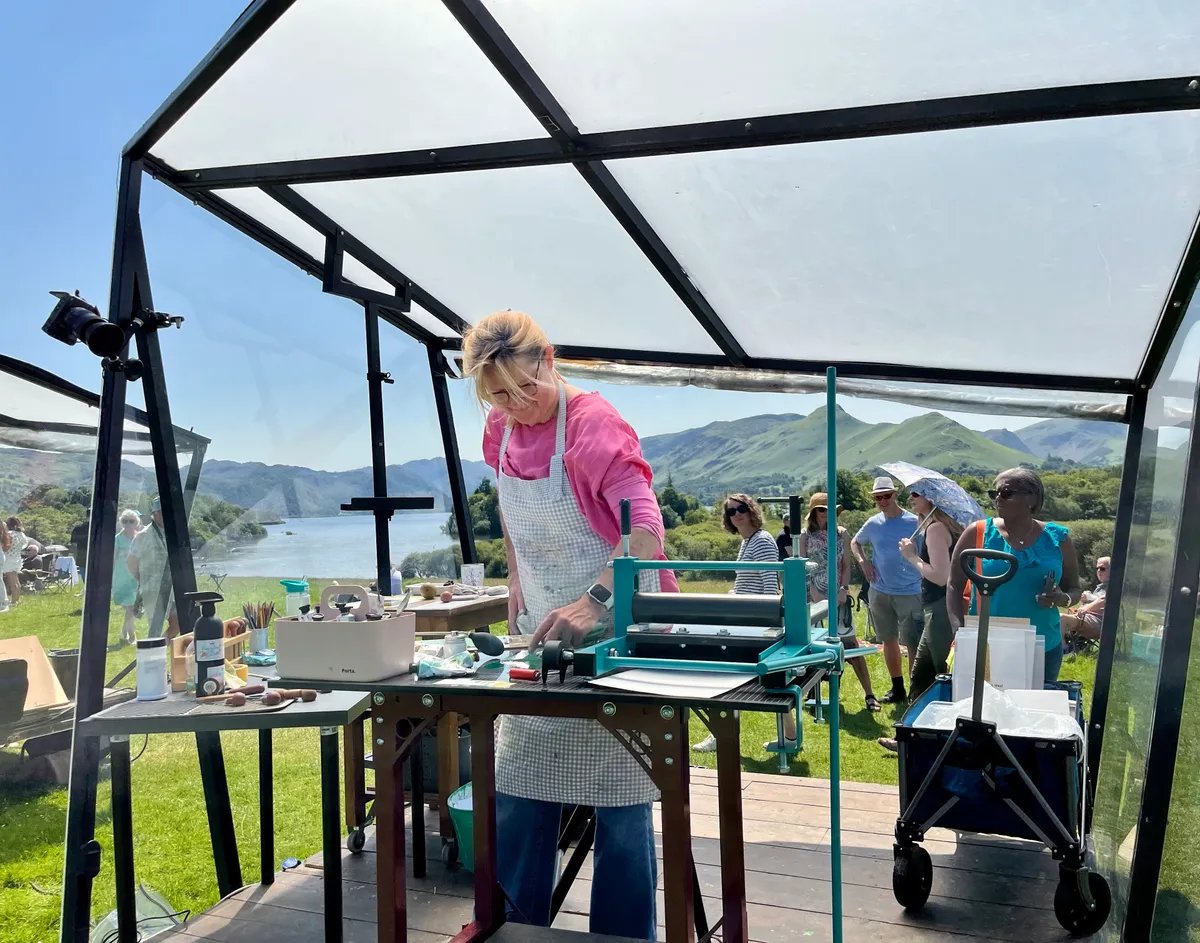MARGATE, England — I can smell Anya Gallaccio’s exhibition at Turner Contemporary before I even walk in. I’m visiting in the second week of the show, but decay has already set in. Along one long wall, hundreds of fresh red flowers are pressed between plexiglass panes. They are already dusted with mold, and some have withered and slipped from glass to floor. Nearby, sheets of aluminum foil coat a swath of the ground. On the surface sit dozens of white pillar candles, some burning, others blown out by the breezes raised by visitors moving around the space. Each day, as they burn into a pile of melted wax, they are replaced and relit. Slowly, a textured organic landscape of wax will build up.
Following my nose, I move into the second space of the exhibition, in which dozens of fresh apples have been threaded through hanging strings of twine. The piece is titled “Falling from grace” (2000/24). A week into the exhibition, they smell comfortably autumnal and cidery, but I can imagine that a rotting, fermenting odor will arrive soon. In the next room is the showstopper of Gallaccio’s practice: The entirety of a 100-plus-year-old ash tree that has been cut up, brought indoors, and reassembled with wires and bolts. The tree, which was dying from ash dieback disease, had already been marked for felling. This work, like several in the exhibition, is a restaging of Gallaccio’s previous installations, which have since rotted away.

There are more permanent works here amongst the decay: marbled paper made of ground gemstones, potatoes and artichokes made of bronze, and a few other ceramics and casts of living things. But the potency of the transient works is so magnetic that these feel secondary, almost superfluous.
Gallaccio’s work turns on the fundamental symbols of Western art history in the tradition of the Renaissance: apples, flowers, candles, trees. The Christian motif of dust to dust undergirds it all: The wall texts tell us exactly where these materials will go after the exhibition, to continue their disintegration. The apples will be planted nearby, the candlewax will be recycled, the tree will be returned to the place where it grew to provide food and shelter for animals as it decomposes. In doing so, Gallaccio reminds us that decay is full of energy — not just an ending, but part of an endless circle of life.
As Turner Contemporary is free to all visitors, it welcomes the sort of regular visits that really make this show sing. Gallaccio’s work, indeed, is something that continually happens, rather than something that is made once and finished. It is designed to be returned to again and again, to be sat with as it slowly but visibly occurs. It is quietly profound in its engagement with eternity.



1700 gerbera held between seven panes of glass and gallery wall (all images © Anya Gallaccio; photo by Jo Underhill, courtesy the artist)
Anya Gallaccio: preserve continues at Turner Contemporary (Rendezvous, Margate, United Kingdom) through January 26, 2025. The exhibition was organized by Melissa Blanchflower.






